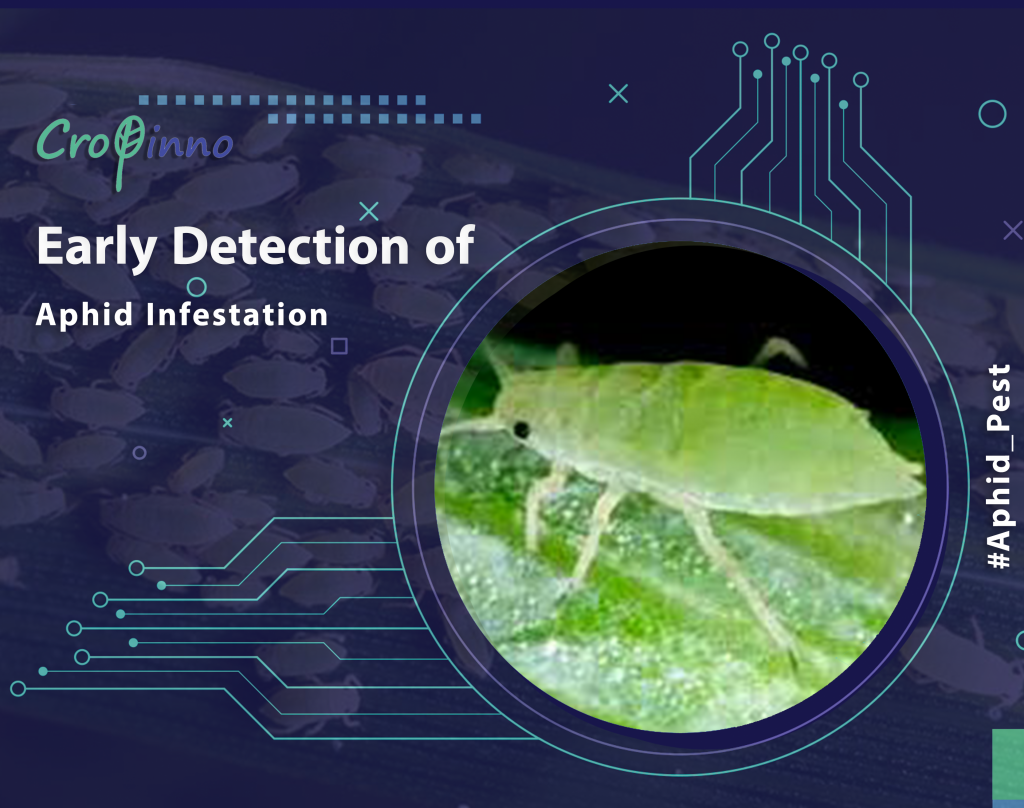There is no doubt that the agriculture career is full of both predictable and unpredictable challenges, and there are cases in which significant plant damage and reduced crop productivity can only prevent if the issue is addressed in a timely manner. Early detection of potential plant stresses in a field is one of the most important capabilities that precision agriculture technologies provide to farmers; Fortunately, stresses such as moisture stress, drought, pest stress such as aphid infestation, and any plant weakness can be detected and examined today by comparing images taken of the earth by remote-sensing satellites at specific intervals. Sometimes satellite imagery makes it even possible to detect plant stress 7 to 10 days earlier than when symptoms become visible to the naked eye over the field. Such a feature can mainly prevent damage to part of the crop, prevent costs, and ultimately help the farmers to get the most out of all parts of their farmland.
Damage caused by aphid pests
Aphids gradually begin to feed on plants in early spring (depending on the geographical area and climatic conditions) and as they grow and multiply, they gradually accumulate on the leaves, stems and flower buds. Accumulation of aphids can usually be seen at the end part of the plant, such as on young leaves and growing flower buds, as well as on the back of leaves. Aphids usually do not harm the plant when in small numbers, but if their favorable living conditions are provided and prompt action is not taken to eliminate pests in the early stages, their number will increase in a short time and aphid infestation affect the activity, growth and appearance of plants. Aphids feed on the sap of plants through their piercing/sucking mouthparts. Due to the spread and feeding of aphids, the following symptoms may occur and be observed in different crop types:
The growth process of plants is significantly affected by aphid pests. The leaves of the plants shrink downwards and wrinkle. The young leaves or young areas of the plant turn yellowish-green and if the aphids remain active, the rest of the plant will also change color. Unhealthy leaves of the plant can be separated from the plant with little force or may fall off after a while. Buds deform and may even die before flowering. During their feeding on plants, aphids also produce honeydew, a sugar-rich sticky liquid that attracts honey bees, red bees, and some species of ants to the plant. This material creates a suitable place for the growth of black soot fungi. In addition, aphids can also be carriers of some plant diseases, especially viral diseases.
How to prevent aphid damage?
Observing the wheat field of one of our platform users, which has been monitored by Cropinno since the beginning of planting, our specialists noticed the occurrence of stress in one area of the field by examining the crop health maps. Then, by visiting the plants in this area, it was found that the wheat crop has suffered from aphid stress in the specific area and needs to be taken care of before the aphid population increases and the farm is seriously damaged. Fortunately, the farmer was able to prevent the growth and spread of aphids over the farm by following the advices of our support team and taking the necessary measures immediately, and was successful to keep the growth of his crop uniform and at the desired level.

The latest reports from the field show that after addressing the area under stress and complete removal of aphid infestation, the crop has continued to grow evenly and is currently in the stem stage.

